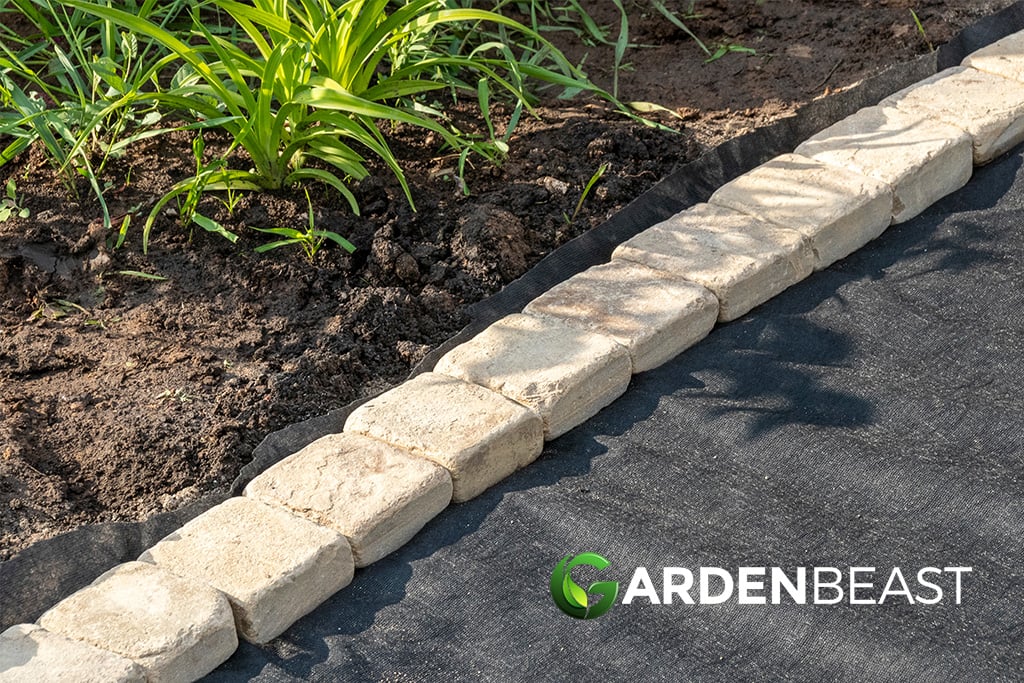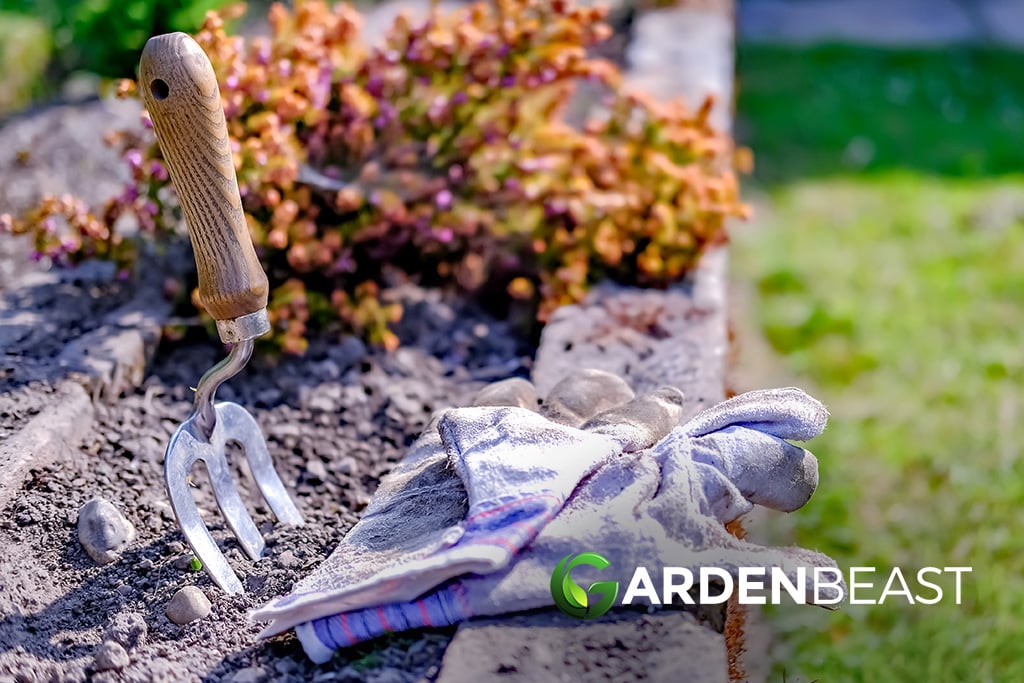Have you started thinking about landscaping your yard or garden only to find that you are stuck between a rock and a hard place…literally?
Perhaps you are already in the process of overhauling your yard but find yourself at a loss as to how to deal with an abundance of rocks. If you are not sure about how to get rid of rocks or how to use them in your yard, we can help.
Rock removal doesn’t have to be difficult, and with our easy to follow suggestions your yard will be rock-free and orderly in no time.
How Rocks Can Disrupt Your Yard
Gravel and decorative rocks can add aesthetic appeal to your yard, but they can also create problems in your garden. Rocks prevent the roots of plants from getting the moisture and nutrients they need by blocking their access to those sources.
Rocks can also cause the soil to become hard and compacted over time which will further limit your plant’s development. Plants and even grass needs room to grow, rocks can prevent that outward movement. Depending on where the rocks in your yard happen to be, they can also pose a danger during routine maintenance.
Stones, pebbles and rocks that get caught in the blades of a lawnmower can break the equipment or even get thrown across the yard. When these rocks are thrown at high velocities, it can result in property damage or even personal injuries.
Tools You Will Need To Get Rid Of Rocks In Your Yard or Garden
- Soil sifter – this tool will let you scoop up dirt and sift out the larger rocks, pebbles, and other types of debris that may be hiding in your soil. You can then replace the dirt in your garden or your yard.
- Rototiller – this tool is helpful in getting rid of large rocks that may be hiding in your yard. It will loosen the soil, so you can see and remove any large rocks you happen to come across. You can buy one or rent one from most hardware stores.
- Wheelbarrow – every yard or garden job needs a way to transport things from one place to the other. Once you spot and collect rocks from your yard, you will need a way to move them to a different location. You can use a bucket if you happen to be working on an incline that is not wheelbarrow friendly.
- Garden rake – depending on the size of the gravel or rocks you are trying to move, a rake may come in handy. Choose a rake that has small enough teeth to catch the rocks you want to be eliminated from your yard.
- Shovel – A shovel is a great way to scoop up large or even small batches of rocks and gravel. Gather them up and toss them in your wheelbarrow or bucket. Make sure to wear gloves to avoid getting blisters on your hands.

Getting Rid Of Unwanted Rocks From Your Soil
Rocks mixed up in the soil take a bit more work to get rid of. Although rocks mixed in the soil are harder to remove, they can still be removed if you are working with the right tools. You should start by breaking up the soil or earth using a tool such as a rototiller.
For larger rocks, try to pick those up before you start working and also collect additional rocks you discover as you till the earth.
Make sure to collect rocks tilled as you go along. This will help get them out of the way and stop them from sinking back into the dirt as you move over the rest of your yard. After you have tilled all of your soil, take a rake and pass through the soil to help weed out medium-sized and small rocks.
Go ahead and pick those up and add them to your wheelbarrow or your bucket. If there are a lot of rocks, you can gather them into a pile before scooping them up with a shovel. You can use a leaf rake to get the smaller rocks and bits of gravel leftover from your other rake passes.
Getting Rid of Unwanted Gravel
Gravel is probably the easiest to remove from a yard or garden. In most cases, the gravel was placed according to a specific design or in certain areas to serve a specific purpose.
Though a few bits of gravel may travel over time, the vast majority will still be in the same general area it was placed from the start. Take your rake and gather all of the gravel into a pile. Next, using a flat shovel, scoop it up and place it in a bucket or your wheelbarrow. Keep doing this until all of your loose gravel has been removed from that particular area.
You can use a broom or the rake to collect any pieces you missed, but if the gravel has fallen into an established garden removing any strays by hand is the best way to avoid damaging plant roots.
Many property owners who use gravel as part of their landscaping design will lay down a protective layer of landscaping fabric.
This layer helps keep the soil from getting compacted, and it also makes gravel removal a breeze. All you need to do is gather the edges of the fabric and wrap the gravel up all in one go. Depending on the total area that has been covered by gravel, you may need to do this in separated portions.

Getting Rid of Giant Boulders in Your Yard
Unwanted rocks are not always small, in some cases; they can be bigger than your family pet or even larger than a person. Moving large rocks is both easier and harder than small rocks and gravel.
The good thing is that you don’t have to spend the day sifting through soil to find and eliminate rocks, the bad news is you have to spend time digging out and loading a big rock instead.
The first thing you will need to do is figure out just how big your target rock actually is. You may need to dig deep down into the dirt to find out the actual size of the boulder. Depending on the size of the boulder, you may be able to dig it up and roll it out of its hole. For extra-large boulders, you will need to dig and attach it to a rope or chain and pull it out of its hole.
Always seek assistance when trying to lift large items, especially boulders. You can easily strain your back, legs or more. The worst-case scenario is trying to lift a large boulder on your own and getting trapped if it falls on you.
For any rock or boulder that is larger than a medium-size dog, always get the help of a second person before attempting to remove it. Once you have an idea about the size, then you need to go about moving it. For two-person boulders, make sure you have your wheelbarrow right next to the rock for a quick drop. Both of you should get a good grip on the rock from two sides and lift it up at the same time. Place it in your wheelbarrow and say goodbye to that unsightly bolder.
Larger boulders may require a bit more effort. You can use a sturdy piece of thick wood as a wedge to help propel the boulder out of the hole. If the boulder is too large for this method, you may need to attach a chain or sturdy rope to the boulder and pull it out with the help of a car, truck, pulley, or tractor.
If all else fails, you can always call in the professionals in the form of a construction company or landscaper to remove the boulder on your behalf.
Removing Rocks For Larger Yards & Properties
Removing unwanted rocks by hand or even with a shovel is rather time-consuming. If you have a medium to large yard, this is the best option. However, for property owners with extensive areas to cover you may want to go big or go home.
Well, since you are already at home, why not rent a tractor to get rid of those unwanted rocks hmm? Attach a plow and a rock screen to a tractor to sort out unwanted rocks from large swaths of soil and dirt. This will make your job much easier and also get you out of the hot sun much more quickly.
The plough will loosen the topsoil over the property. Once you finish your pass with the plough, all you need to do is attach a screen next to go over all the area you have just loosened. The great thing about this method is that the sifter will take all the unwanted rocks from the soil and put them in a separate container on the tractor for you.
At the same time, after sifting through the dirt for rock, the soil will be laid back down in its original area. All you have to do is operate the tractor, and your rock problem will be a thing of the past
